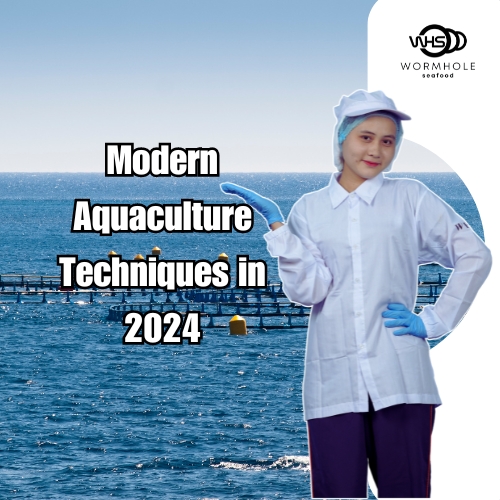Modern Aquaculture Techniques in 2024

In 2024, modern aquaculture techniques are revolutionizing the industry with advanced technologies and sustainable practices that enhance efficiency and environmental stewardship.
1. Recirculating Aquaculture Systems (RAS):
These systems continuously recycle water, reducing the need for large water volumes and enabling precise control over water quality and temperature, enhancing fish growth and health.
2. Integrated Multi-Trophic Aquaculture (IMTA):
This technique involves cultivating multiple species from different trophic levels in the same system, such as fish, shellfish, and seaweed. This method promotes sustainability by mimicking natural ecosystems and reducing waste.
3. Biofloc Technology (BFT):
Biofloc systems use microbial communities to treat waste and provide additional nutrition to the cultured species. This method improves water quality and reduces the need for water exchange.
4. Offshore Aquaculture:
Offshore farming involves placing aquaculture operations in deeper, open ocean waters. This method reduces environmental impacts on coastal areas and provides a more stable environment for high-quality seafood production.
5. Aquaponics:
Combining aquaculture with hydroponics, aquaponics systems use fish waste to provide nutrients for plant growth. This integrated system maximizes resource efficiency and produces both fish and vegetables.
6. Genetic Improvement:
Advances in selective breeding and genetic modification are leading to the development of more resilient and fast-growing aquatic species, improving productivity and disease resistance.
7. Automated Monitoring and Feeding Systems:
Automation and AI technologies are being used to monitor water quality, fish health, and feeding patterns. These systems optimize feed use, reduce labour costs, and enhance overall efficiency.
8. Nanotechnology:
The application of nanotechnology in aquaculture includes water purification, disease detection, and targeted drug delivery, improving fish health and reducing the use of antibiotics.
These modern techniques are shaping the future of aquaculture, making it more sustainable, efficient, and capable of supporting the growing global demand for seafood.

